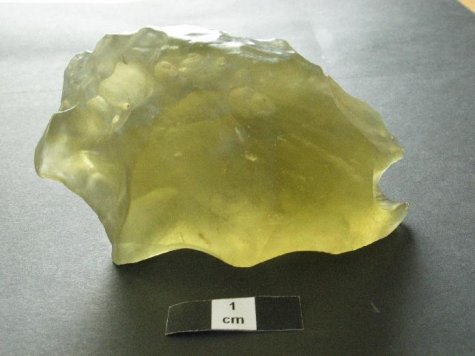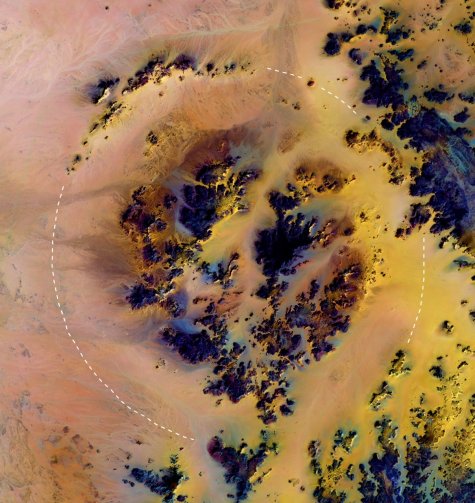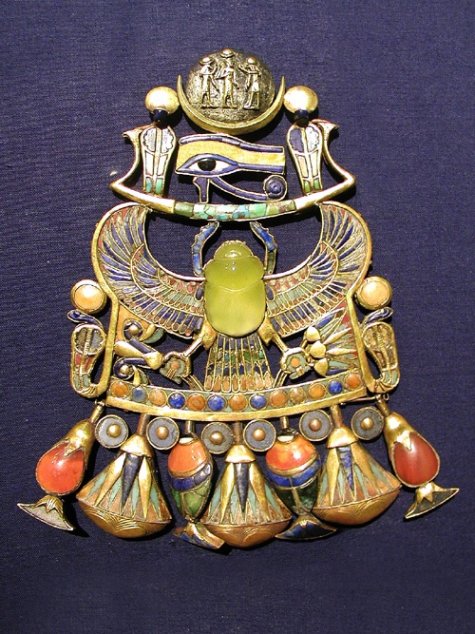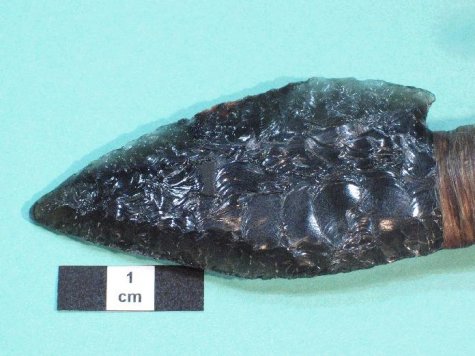World of Materials
The most mysterious material – Libyan desert glass
What can it have been? Natural quartz glass may have several origins. Firstly volcanic glass or obsidian. This however contains much additional matter which colours it nearly black. And no volcanoes – active or dormant – are known near the Libyan desert glass find area. Quite pure quartz glass may also be produced as a result of lightning hitting quartz sand. But such artefacts – fulgurites – have a characteristic, easily recognisable shape and are smaller than the large lumps of desert glass.
The origin of moldavite is thought to be the fall of a giant meteorite some 14,3 – 14,5 million years ago on to the territory of present-day Bavaria (the Nördlinger Ries circular depression). The molten sand that was thrown up when it collided with the ground fell down on the areas of today’s Bohemia and Moravia (Czech Republic) through which the Vltava (German Moldau) river flows. The problem with the Libyan desert glass is (was) however the fact that no meteoritic crater that could be tied to the formation of the glass had been identified in the surrounding area. Because of this the most divergent possibilities for the formation of the desert glass have been offered – starting with some low-temperature chemical (sol-gel) process, to a nuclear war between ancient civilisations (the reference above to the method for determining the age of the desert glass should not be read as confirmation of this view!) or to a collision between Earth and a celestial body with an extraordinary composition.
Lately however a formation has been identified in the area in question which has been tied to the genesis of the Libya desert glass. It is a partly visible ring structure with a diameter of 31 km which the discoverers - Farouk El-Baz and Eman Ghoneim from Boston University – named the Kebira crater (Google Maps). Incidentally Farouk El Baz served with NASA as selector of landing sites in the one-time Apollo Moon Mission projects. Whether there really is a meteoritic crater in Kebira and whether the origin of this also could be the origin of the Libyan desert glass – these are questions which cannot be answered without on-site investigations. Up to now the answers are still lacking.
Why talk of the Libyan desert glass as a material, that is, a substance that is used for making something? When Howard Carter discovered the tomb of Egyptian pharaoh Tutankhamun, untouched by robbers, in 1922, there was among the innumerable treasures of the tomb also the breastplate of the Pharaoh where the image of Egypt’s sacred beetle – the scarab – was carved out of an unknown stone material. Only much later (1998) the Italian mineralogist Vincenzo de Michele established that this material was Libyan desert glass. But the use of this material goes much further back in history – evidence has been found that shows that the material was used by the local inhabitants in the Neolithic period and even earlier. Similar to obsidian the Libyan desert glass yields very sharp-edged shards on shattering and is exceptionally well suited for making different “stone” working or hunting tools and weapons.
See also Materjalimaailm: Libyan desert glass / Obsidian.













